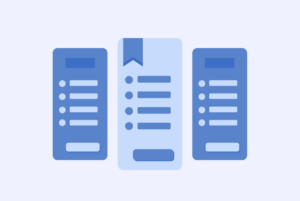Refining Tiered SaaS Offerings: Expert Strategies

In an era of global connectivity, businesses have transcended geographical boundaries, reaching a diverse customer base that spans individual users to Fortune 500 corporations. This shift is particularly challenging for Software as a Service (SaaS) providers, who find themselves at the forefront of meeting the demands of this expansive customer spectrum. To navigate this intricate landscape, a strategic response has emerged—tiered offerings, especially within the dynamic realm of SaaS.
In this insightful exploration, we will explore the fundamental principles, potential pitfalls, and transformative impact of artificial intelligence (AI) in refining tiered SaaS offerings.
Tiered Pricing: Streamlining Choices
A tiered pricing strategy provides distinct pricing choices for the same product or service, each offering varying levels of value and options. Whether termed ‘choices pricing,’ ‘good-better-best pricing,’ ‘gold-silver-bronze method,’ or ‘Goldilocks pricing,’ this strategy brings transparency to customers, simplifying their decision-making process.

Why consider a tiered approach?
A single pricing model presents Hobson’s choice for potential customers: either accept the offered price and its associated features or seek alternatives elsewhere. This restrictive approach risks alienating a significant portion of the market by failing to accommodate the diverse needs of different customer segments. In contrast, a three-tier pricing strategy embraces flexibility, offering a range of pricing options tailored to specific customer needs. By catering to a wider spectrum of customers, businesses can effectively capture a larger market share and maximize their revenue potential.
Crafting the Perfect SaaS Package: Navigating Pitfalls
Crafting an effective SaaS package requires more than understanding principles; it necessitates navigating potential pitfalls. To mitigate decision fatigue, businesses can implement a ‘good-better-best’ tiered subscription model, simplifying choices while meeting diverse needs. The strategic use of freemium and usage paywalls builds trust and encourages users to transition to paid plans. Balancing customer value and profitability is an ongoing challenge, addressed through technological advancements like AI for personalized digital journeys.
Strategies for Tiered SaaS Success
Apart from the core principles mentioned above, consider these additional strategies to enhance the success of tiered SaaS offerings:
Simplicity and Clarity: Avoid overcomplicating the pricing structure or offering too many tiers, ensuring customers can easily understand and choose the right plan.
Value Proposition Emphasis: Clearly articulate the value proposition of each tier, highlighting the distinct benefits and features that justify the price point.
Transparency and Trust: Maintain pricing and feature details transparency, avoiding hidden costs or confusing terms to build trust and customer confidence.
Data-Driven Decisions: Leverage data and analytics to inform pricing and packaging decisions, ensuring that offerings align with customer needs and market trends.
Freemium Model Implementation: Consider offering a freemium tier to attract new customers and provide a taste of the product’s value before committing to a paid plan.
Upselling and Cross-selling Opportunities: Utilize upselling and cross-selling strategies to encourage customers to upgrade to higher tiers or add complementary services, maximizing revenue potential.
Unlocking AI’s Potential in Tiered Offerings
In the era of technological advancements, AI stands as a game-changer in crafting tiered offerings that drive sustained growth and customer retention. AI’s capabilities in diverse user segmentation empower businesses to analyze data, uncover insights, and create tailored product and service bundles. Predictive analytics, fueled by AI, combat subscription churn by detecting early warning signs, while strategic upselling is enhanced through AI and machine learning, predicting growth opportunities.
Harnessing AI Segment Diverse Users
AI emerges as a potent tool for analyzing user data, providing insights into usage patterns, demographics, purchasing behaviors, and organizational roles. By leveraging AI’s capabilities, companies can create product and service bundles tailored to diverse buyer personas, accelerating deal closure rates, boosting sales conversions, and increasing revenue.
Driving Revenue Growth Through Strategic Upselling
AI and machine learning empower companies to predict upsell and cross-sell opportunities by identifying correlations between customer size, tenure, industry, and usage patterns. This enables the recommendation of add-ons tailored to niche customer segments, fostering organic revenue growth in the ever-evolving landscape of tiered SaaS offerings.
Leveraging Predictive Analytics to Counter Subscription Churn
AI’s predictive analytics become a lifeline in the battle against subscription churn. Early detection of warning signs allows companies to proactively prevent churn by identifying engaging products, features, or services accessible to all users. This approach enhances product stickiness and reduces churn, ensuring sustained customer loyalty.
Conclusion
In the ever-evolving landscape of tiered SaaS offerings, the quest to deliver exceptional value to a global customer base is unending. Therefore, the investment in continuous adaptation of SaaS offerings, fueled by AI-driven insights, innovation, and a steadfast commitment to customer-centricity, remains pivotal for maintaining a competitive edge.
